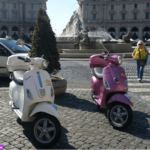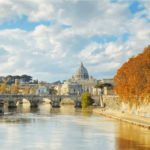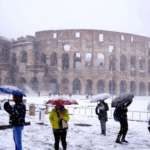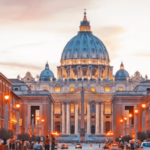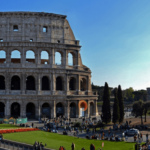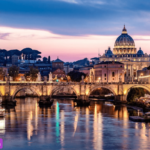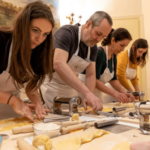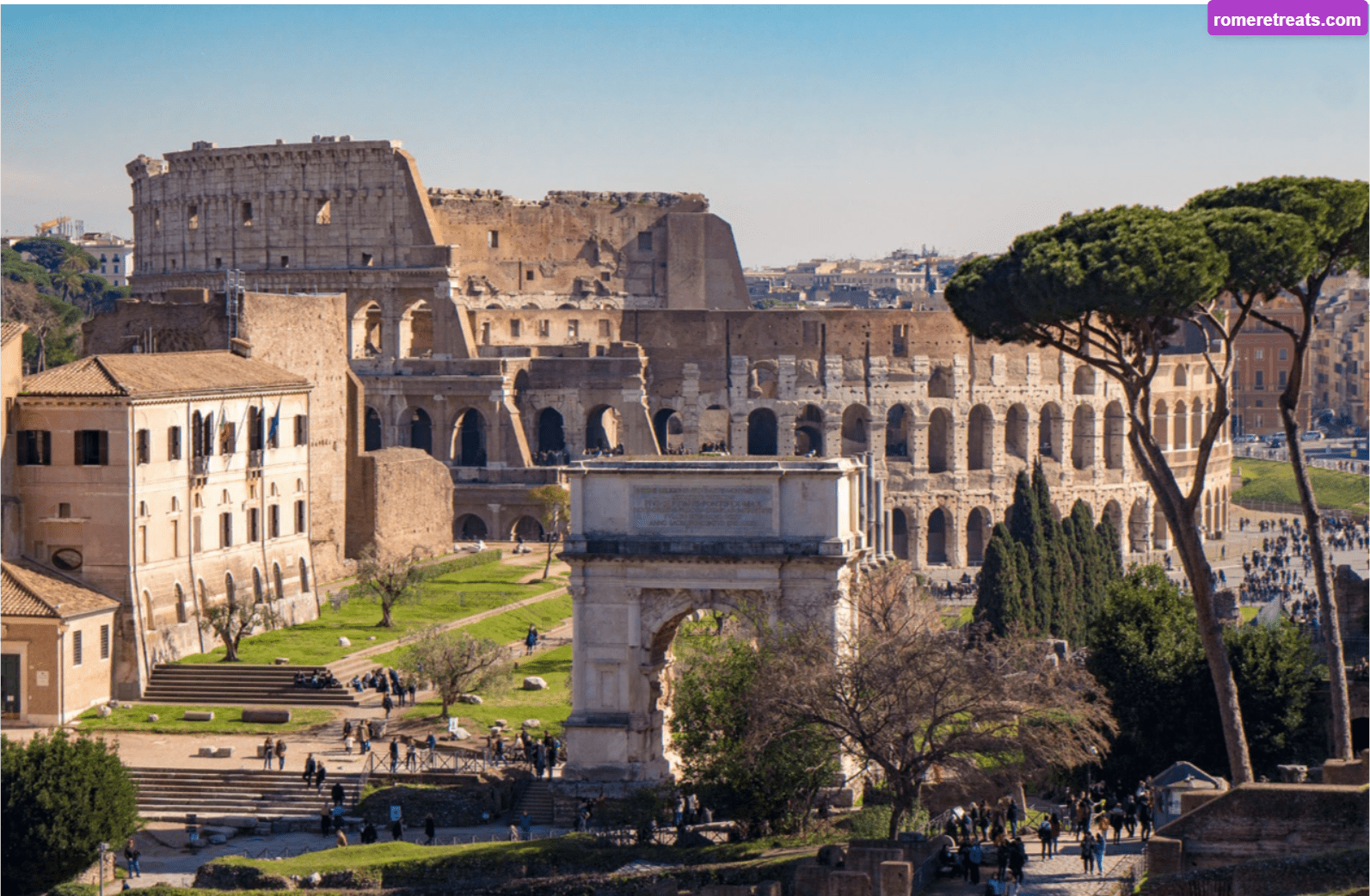One of the foremost concerns travelers have is Rome a walkable city. Is it feasible and comfortable to explore Rome on foot? The concise answer is YES! Walking through Rome’s historic center is indeed the most enjoyable way to experience the city.
Whether you’re exploring the bustling city center, wandering through a tranquil park, or getting lost in the charming alleys of Trastevere, be prepared for a day of extensive walking. Expect to cover several miles as you take in the rich history and vibrant atmosphere of Rome.
In this guide, I will offer valuable tips for planning an ideal walking tour in Rome. I’ll provide insights on distances, the condition of the streets, and suggest engaging itineraries that you can follow to make the most of your exploration.
Is Rome’s City Center Walkable? Tips for a Smooth Walk
- Wear Comfortable Shoes: The streets of Rome’s city center are adorned with sanpietrini, traditional cobblestones that can be uneven. This is a primary concern for many tourists. To navigate these cobbled streets comfortably, it’s essential to wear supportive and comfortable footwear such as sneakers, loafers, flat sandals, or running shoes. Not only will this help you handle the uneven surfaces, but it will also make the extensive walking more manageable.
- Alternate Walking with Public Transport: For added convenience, consider using Rome’s small electric buses, lines 117 and 119, which operate within the city center. These buses can be a great way to break up your walking, allowing you to explore more comfortably without exhausting yourself. This approach can help you cover more ground while enjoying both walking and public transport.
- Plan Strategic Breaks: To maintain your energy levels throughout the day, plan to take breaks at various cafes, restaurants, bars, and gelato shops scattered around the city center. Rome offers plenty of places where you can sit down, rest, and enjoy a refreshment. These breaks will help you recharge, relax, and make your walking experience more enjoyable and less tiring.
- Explore Hidden Gems: Rome is filled with lesser-known attractions that are worth discovering. As you walk, take time to visit obscure churches, hidden cloisters, and charming internal courtyards that might not be on the usual tourist routes. These hidden gems can offer a unique and enriching experience away from the more crowded areas.
- Carry a Reusable Water Bottle: Rome is known for its nasoni, small public fountains that dispense drinkable water around the city. Carrying a reusable water bottle allows you to stay hydrated throughout your walk. You can easily refill your bottle at any of these fountains, which will help you save both time and money.
Is Rome A Walkable City : Where to Walk in Rome? 3 Itinerary Suggestions
The Historic Center – From Spanish Steps to Piazza Navona
- Piazza di Spagna and the Spanish Steps: Start your walk at the Spanish Steps, conveniently located next to the Spagna metro station. This monumental staircase leads to the Church of Trinità dei Monti and is adorned with the beautiful Barcaccia Fountain by Pietro Bernini. It’s an iconic starting point for exploring Rome.
- Fontana di Trevi: From the Spanish Steps, take a short and easy walk to the Trevi Fountain. Head towards Via di Propaganda and Via della Stamperia to reach this magnificent Baroque fountain, which is one of Rome’s most famous landmarks. The fountain’s intricate sculptures and the tradition of tossing a coin for good luck make it a must-see.
- Piazza Venezia: Continue your walk to Piazza Venezia, which is about a 10-minute stroll from the Trevi Fountain. You can either take Via delle Muratte to Via del Corso or explore the smaller alleys like Via dell’Archetto and Piazza dei Santi Apostoli. This area is home to several important landmarks, including the Vittoriano monument, Palazzo Venezia, Trajan’s Column, and the Capitoline Hill designed by Michelangelo.
- The Pantheon: From Piazza Venezia, walk along Via del Corso and then turn onto Via di Pietra to reach Piazza della Rotonda. The Pantheon, originally a temple for all the gods, is renowned for its impressive dome and has been a subject of fascination and study for centuries. It’s a highlight of any walking tour in Rome.
- Piazza Navona: Conclude this itinerary by crossing Corso del Rinascimento to Piazza Navona. This elegant, elliptical square is built on the site of the Stadium of Domitian and features three grand fountains, including the Four Rivers Fountain by Bernini. The square is also home to the Baroque Church of Sant’Agnese in Agone, designed by Francesco Borromini.
Discovering Villa Borghese
Is Rome walkable only in the city center? Definitely not! Many areas, such as Villa Borghese, are best explored on foot. The park is easily accessible by metro; the Flaminio station offers a convenient entrance to start your visit.
- Water-Powered Clock: Begin your exploration of Villa Borghese at the water-powered clock, designed by a Dominican friar in 1867. It’s located near the park’s entrance and serves as a great starting point for your itinerary.
- Pincio Terrace: Head to the Pincio Terrace, a popular viewpoint offering stunning panoramic views of Rome. It’s an ideal spot for capturing beautiful photographs and enjoying the cityscape.
- Mostra dell’Acqua Felice: Continue your visit to the Mostra dell’Acqua Felice, a fountain marking the end of the Aqua Felix aqueduct. This historic site is a notable feature of the park.
- Villa Borghese Lake: Make your way to the Villa Borghese Lake, where you can rent a boat and row around the picturesque waters. The lake is surrounded by lush greenery and offers a peaceful retreat from the city’s hustle and bustle.
- Casina di Raffaello: Visit Casina di Raffaello, a historical building that now hosts workshops and activities for children. It’s located along Viale della Casina di Raffaello and adds a cultural element to your visit.
- Diana Temple: A short distance from Casina di Raffaello, you’ll find the Temple of Diana. Although the original statue of Diana has been moved to the Louvre in Paris, the temple remains a charming spot for photographs.
- Fontana dei Cavalli Marini: Proceed to the Fontana dei Cavalli Marini, a beautiful fountain located along Viale dei Pupazzi. Its elegant design makes it a highlight of the park.
- Galleria Borghese: To reach the renowned Galleria Borghese, follow one of the main boulevards such as Viale del Museo Borghese. This museum, set in a historic villa, houses an impressive collection of masterpieces by artists like Bernini, Caravaggio, and Canova.
- Bioparco: If you’re traveling with family, consider a visit to the Bioparco, Rome’s zoo. A short walk from the Galleria Borghese along Viale dell’Uccelliera will take you to this fun and educational attraction.
Exploring Trastevere
Trastevere is one of Rome’s most charming neighborhoods, best explored on foot. Start your journey at the Piazza di Santa Maria in Trastevere.
- Basilica di Santa Maria in Trastevere: Begin at this historic basilica, one of the most significant churches in the neighborhood. It is believed to be one of the earliest churches dedicated to the Virgin Mary.
- Chiesa di San Pietro in Montorio: Take a short walk to this medieval church located on Janiculum Hill. It is notable for being the burial place of Beatrice Cenci and offers a glimpse into Rome’s historical layers.
- Fontana dell’Acqua Paola: Walk to this impressive monumental fountain, also known as the Fontanone del Gianicolo. It’s a significant landmark and offers a great photo opportunity.
- Orto Botanico: Visit the Orto Botanico, a botanical garden where you can stroll among diverse plant species and enjoy a peaceful escape from the city’s bustle. It’s located near the Fontana dell’Acqua Paola.
- Villa Farnesina: Discover Villa Farnesina, a beautiful Renaissance villa known for its frescoes by Raphael. It’s just a short walk from the botanical garden and is a hidden gem in Trastevere.
- Piazza Trilussa: Conclude your walk at Piazza Trilussa, a lively square popular with both locals and tourists. It’s an excellent spot to relax and enjoy a drink, or you can continue your walk along the Tiber River to explore further areas like Campo de’ Fiori or Tiber Island.
Planning Your Walk in Rome
- Draw Your Itinerary: Before setting out, outline your walking route to make the most of your time in Rome. Having a planned itinerary will help you navigate the city efficiently and ensure you don’t miss key attractions. However, be open to spontaneous detours if you discover something interesting along the way.
- Research Dining Options: As you’ll likely want to eat during your walking tour, it’s a good idea to research dining options ahead of time. Identify cafes, restaurants, and eateries along your route where you can stop for a meal or a quick snack. This will save you from scrambling to find food and ensure you have a pleasant dining experience.
- Dress Appropriately: Wear comfortable and practical clothing for your walk. Good walking shoes are essential, as mentioned earlier, and make sure your clothing is suitable for visiting churches and religious sites, where modest attire is often required. Also, dress in layers so you can adjust to changing weather conditions throughout the day.
- Check the Weather Forecast: Rome’s weather can be unpredictable, so check the forecast before you head out. Be prepared for changes in weather by carrying an umbrella, rain jacket, or sunscreen as needed. This will help you stay comfortable and make the most of your walking tour, regardless of the weather conditions.
